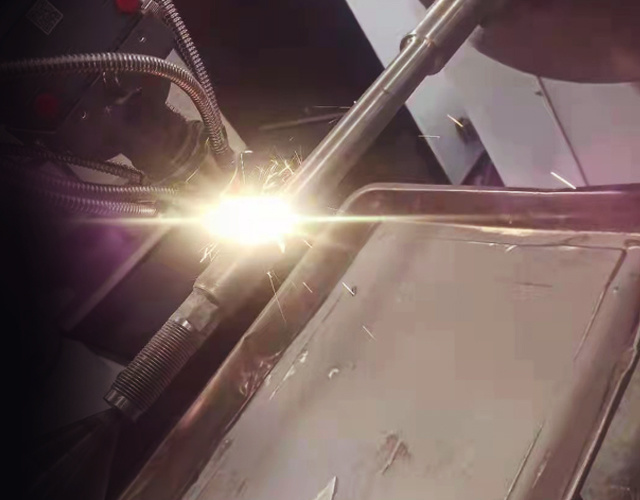Some knowledge points about laser cladding, told by a hydraulic pillar laser cladding manufacturer
Laser Cladding of Hydraulic Support Columns The manufacturer believes that laser cladding technology refers to a process where selected coating materials are placed on the surface of the substrate to be coated in different filling ways. Laser irradiation melts a thin layer on the substrate surface and rapidly solidifies to form a surface coating with extremely low dilution. It forms a metallurgical bond with the base material, significantly improving the wear resistance, corrosion resistance, heat resistance, oxidation resistance, and electrical properties of the base material surface.

Laser Cladding of Hydraulic Support Columns The manufacturer believes that laser cladding technology is a new technology with high economic benefits. It can produce high-performance alloy surfaces on inexpensive metal substrates without affecting the performance of the substrate, reducing costs and saving precious and rare metal materials. The lasers used in laser cladding mainly include CO2 lasers and solid-state lasers, including disk lasers, fiber lasers, and diode lasers.
The manufacturer of laser cladding for hydraulic support columns believes that laser cladding can be divided into two types according to the powder feeding process: pre-placed powder method and simultaneous powder feeding method. These two methods have similar effects. The simultaneous powder feeding method has the advantages of easy automation control, high laser energy absorption rate, and no internal pores. Especially for metal ceramic cladding, it can significantly improve the crack resistance of the cladding layer and make the hard ceramic phase uniformly distributed in the cladding layer.
1. The manufacturer of laser cladding for hydraulic support columns believes that laser cladding has the following characteristics:
(1) Fast cooling speed (up to 106 K/s), which is a rapid solidification process, easily obtaining a fine crystal structure or producing new phases that cannot be obtained under equilibrium conditions, such as unstable phases and amorphous phases.
(2) Low coating dilution rate (generally less than 5%), forming a firm bond with the substrate through metallurgy or interfacial diffusion. By adjusting the laser process parameters, a good coating with a low dilution rate can be obtained, and the coating composition and dilution rate can be controlled;
(3) Small heat input and deformation, especially when high-power density rapid cladding is used, the deformation can be reduced to the assembly tolerance of the part.
(4) There is almost no limitation on the selection of powder, especially when cladding high-melting-point alloys on low-melting-point metal surfaces;
(5) Large range of cladding layer thickness, the coating thickness of one powder feeding is 0.2 ~ 2.0 mm.
(6) Deposition can be carried out in selected areas, with low material consumption and high cost performance;
(7) The beam aiming can weld areas that are unreachable;
(8) The process is easy to automate.
It is very suitable for wear repair of common easily damaged parts in oil fields.
2. The manufacturer of laser cladding for hydraulic support columns believes that the similarities and differences between laser cladding and laser alloying.
Laser Cladding of Hydraulic Support Columns The manufacturer believes that both laser cladding and laser alloying utilize the rapid melting process generated by a high-energy-density laser beam to form alloy coatings with completely different compositions and properties on the substrate surface and fuse with the substrate. These two processes are similar but essentially different. The main differences are as follows:
(1) In the laser cladding process, the cladding material is completely melted, while the melting layer of the substrate is extremely thin, and the effect on the composition of the cladding layer is minimal. Laser alloying is to add alloy elements to the surface melting cladding layer of the base material, thereby forming a new alloy layer on the basis of the base material.
(2) The manufacturer of laser cladding for hydraulic support columns believes that laser cladding is not essentially using the molten metal of the substrate surface layer as a solvent, but melting separately prepared alloy powder to make it the main alloy of the cladding layer. At the same time, the thin layer of the substrate alloy melts and forms a metallurgical bond with it. Laser cladding technology for preparing new materials is an important foundation for the repair and remanufacturing of failed parts and the direct manufacturing of metal parts under extreme conditions, and it has received great attention from the scientific community and enterprises worldwide.
Related Information
RELATED INFORMATION
2022-08-26 10:09
2022-08-16 15:13
2022-08-08 10:10
Leave a message
MESSAGE CONSULTATION









